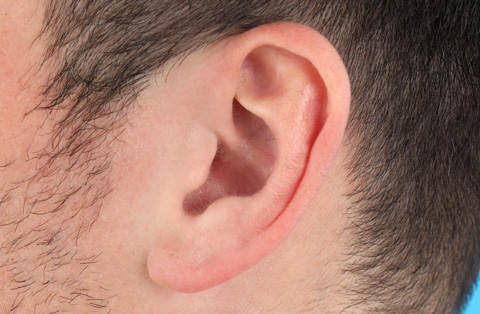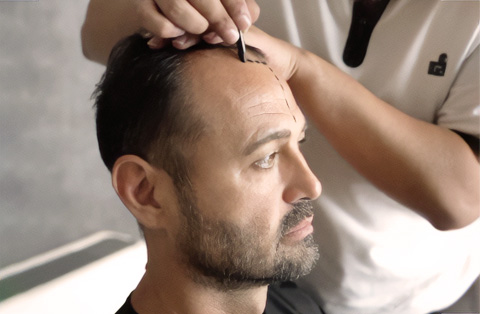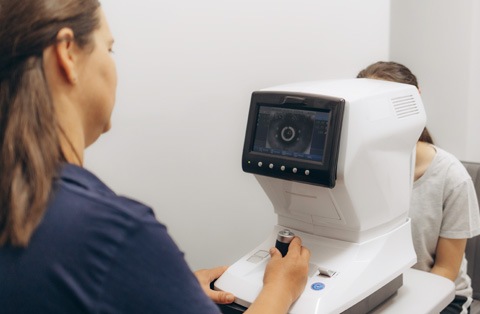Struggling with hand numbness or elbow pain? Learn how to treat and prevent cubital tunnel syndrome, before it leads to lasting nerve damage and hand weakness. Get expert-backed relief options now.
Cubital tunnel syndrome is a condition where the ulnar nerve (also known as the “funny bone” nerve) gets compressed at the elbow, leading to hand numbness, tingling, and weakness.
It’s the second most common nerve compression syndrome in the arm, after carpal tunnel. Without treatment, it can lead to lasting nerve damage and loss of hand function, making early diagnosis and management essential.
In this guide, you’ll learn what causes cubital tunnel syndrome, how to recognize its symptoms, the best treatment options, and how to prevent it from returning.
What is cubital tunnel syndrome?
Cubital tunnel syndrome is a nerve compression disorder that affects the ulnar nerve as it passes through the cubital tunnel at the elbow. The ulnar nerve is one of the three main nerves in the arm and controls sensation in the ring and little fingers, as well as muscle function in the forearm and hand.
The cubital tunnel is a narrow passageway on the inside of the elbow, formed by bone and soft tissue. When the ulnar nerve becomes compressed or stretched in this area, it can lead to pain, numbness, and muscle weakness, especially in the hand and fingers.
This condition is sometimes referred to as "ulnar nerve entrapment at the elbow." It’s the second most common peripheral nerve compression syndrome in the upper limb, after carpal tunnel syndrome.
Cubital tunnel syndrome can develop gradually or suddenly, and without proper treatment, it may cause lasting nerve damage. Early recognition and intervention are important to prevent long-term complications.
How does the ulnar nerve become entrapped in the cubital tunnel?
The ulnar nerve becomes entrapped in the cubital tunnel when it’s compressed, stretched, or irritated as it passes behind the medial epicondyle, the bony bump on the inner side of the elbow. Several anatomical and mechanical factors can cause this entrapment.
The cubital tunnel is a tight space bordered by bone and a band of connective tissue called Osborne’s ligament. When the elbow bends, this tunnel narrows and the ulnar nerve stretches. Repeated or prolonged flexion increases pressure on the nerve and reduces blood flow, which can injure the nerve over time.
Common mechanisms of entrapment include:
Direct compression: Leaning on the elbow for long periods compresses the nerve against the bone.
Repetitive motion: Frequent elbow bending—such as lifting, throwing, or pulling—can strain the nerve.
Tight or thickened tissues: Scar tissue or a thickened Osborne’s ligament can narrow the tunnel.
Subluxation: In some people, the ulnar nerve shifts or "snaps" over the bone with elbow movement, causing irritation.
These factors reduce the space available for the nerve and lead to symptoms of cubital tunnel syndrome.
What makes this tunnel unique compared to other nerve pathways?
The cubital tunnel is unique because of its anatomical position, structure, and the mechanical stress placed on the ulnar nerve during normal elbow movement.
Key features that distinguish it from other nerve pathways include:
Anatomical tightness: The cubital tunnel is a narrow, rigid passage bordered by bone (the medial epicondyle of the humerus) and Osborne’s ligament. Even slight swelling or tissue thickening can compress the ulnar nerve.
Vulnerability during elbow flexion: Unlike most nerve pathways, the ulnar nerve in the cubital tunnel must stretch significantly (up to 5 mm) every time the elbow bends. This repetitive stretching increases tension and reduces blood flow.
Lack of protective muscle padding: The ulnar nerve in this region lies close to the surface, with minimal soft tissue covering. This makes it more susceptible to external pressure and trauma.
Dynamic instability: In some individuals, the ulnar nerve can shift out of place (subluxate) during elbow movement, causing friction and irritation not seen in more stable nerve pathways.
These characteristics make the cubital tunnel a common site of nerve entrapment and explain why the ulnar nerve is especially prone to compression at the elbow.
What causes cubital tunnel syndrome?
Cubital tunnel syndrome is caused by prolonged or repeated pressure, stretching, or irritation of the ulnar nerve at the elbow. Several structural and behavioral factors can contribute to this condition.
Repetitive elbow flexion
Bending the elbow frequently—during work, sports, or daily activities—tightens the cubital tunnel and stretches the ulnar nerve. Over time, this mechanical stress can lead to inflammation or compression.
Direct pressure on the elbow
Leaning on hard surfaces or resting the elbow for extended periods increases pressure inside the tunnel. The ulnar nerve, which lies just under the skin, becomes more vulnerable to compression.
Elbow trauma or fracture
Past injuries such as elbow fractures, dislocations, or bone spurs can change the tunnel’s shape and reduce space for the nerve. Scar tissue from surgery or trauma may also contribute.
Abnormal nerve movement
In some people, the ulnar nerve shifts or snaps over the bony ridge during elbow motion—a condition called subluxation. This repetitive irritation can damage the nerve lining.
Anatomical narrowing
A naturally tight cubital tunnel or thickening of the surrounding connective tissues, such as Osborne’s ligament, can decrease the available space and compress the nerve.
Systemic or metabolic factors
Conditions like diabetes, rheumatoid arthritis, or hypothyroidism can increase the risk of nerve compression by affecting nerve health or surrounding tissues.
In many cases, multiple factors act together to cause cubital tunnel syndrome. Identifying the primary cause helps guide effective treatment and prevention strategies.
Which anatomical structures contribute to compression?
Several structures can compress the ulnar nerve at the elbow, including Osborne’s ligament, the medial epicondyle, the flexor carpi ulnaris muscle, and, in some cases, the arcade of Struthers or an accessory muscle. These structures can narrow the cubital tunnel and press on the nerve during movement.
What common activities or injuries lead to this condition?
Common causes include frequent elbow bending, resting on hard surfaces, or repetitive arm movements like lifting or throwing. Injuries such as elbow fractures or dislocations can also narrow the cubital tunnel. These actions or traumas increase pressure on the ulnar nerve, leading to irritation or compression over time.
Are there underlying medical conditions that increase the risk?
Yes, conditions like diabetes, rheumatoid arthritis, and hypothyroidism can increase the risk. They may affect nerve health or cause tissue swelling around the elbow, making the ulnar nerve more prone to compression in the cubital tunnel. Previous elbow injuries or arthritis can also raise the risk.
What are the signs and symptoms of cubital tunnel syndrome?
Cubital tunnel syndrome happens when the ulnar nerve is irritated or compressed near the elbow. This can affect how your hand feels and works.
At first, the symptoms may come and go. You might notice them more when your elbow is bent for a long time, like when talking on the phone, sleeping, or typing. As the condition gets worse, the symptoms can become more frequent and harder to ignore.
In later stages, it can affect your grip strength, coordination, and even cause visible muscle loss in the hand.
Here are the most common signs and symptoms:
Numbness or tingling in the ring and little fingers
A feeling like your hand “falls asleep” after elbow bending
Weak grip or difficulty holding objects
Trouble with finger coordination (like buttoning clothes)
Pain on the inside of the elbow
Hand clumsiness or dropping things
Muscle loss in the small muscles of the hand (in severe cases)
If these symptoms last more than a few weeks or begin to interfere with daily tasks, it’s important to seek medical advice.
How is cubital tunnel syndrome diagnosed?
Doctors diagnose cubital tunnel syndrome by asking about your symptoms, doing a physical exam, and sometimes using nerve tests.
Medical history and exam
Your doctor will ask when your symptoms started, what makes them worse, and how they affect your hand. They’ll check for numbness, weakness, or muscle loss. Simple tests like tapping the elbow or bending it may trigger your symptoms during the exam.
Nerve tests
To confirm the diagnosis, your doctor may order:
Nerve conduction study – shows how fast signals move through the ulnar nerve
EMG (electromyography) – checks for muscle damage from nerve pressure
Imaging (sometimes)
Ultrasound or MRI may be used if the doctor suspects a structural issue like a cyst or joint problem.
These steps help find out how serious the nerve compression is and what treatment you may need.
What are cubital tunnel syndrome treatments?
Treatment for cubital tunnel syndrome depends on how severe your symptoms are. Most people start with non-surgical options. If those don’t help, surgery may be needed to relieve pressure on the ulnar nerve.
Non-surgical treatments
Mild to moderate symptoms often improve with lifestyle changes and supportive care, such as:
Avoiding prolonged elbow bending: especially during sleep or phone use
Wearing a night splint: keeps the elbow slightly straight to reduce nerve pressure
Using padding or elbow supports: protects the nerve during daily activities
Changing activity habits: avoiding leaning on your elbows or doing repeated arm movements
Anti-inflammatory medications: may help reduce pain and swelling
Surgical treatment
If symptoms don’t improve or if there’s muscle weakness or nerve damage, nerve decompression surgery may be recommended. Common procedures include:
Ulnar nerve decompression: releases pressure by opening the tight areas around the nerve
Ulnar nerve transposition: moves the nerve to a new position in front of the elbow to prevent further stretching
Medial epicondylectomy: removes part of the bony bump to make more space for the nerve
Surgery is usually successful, especially when done before permanent damage occurs. Your doctor will help choose the best treatment based on your symptoms and nerve test results.
Do exercises relieve the pain of cubital tunnel syndrome?
Yes, gentle nerve gliding and stretching exercises can help reduce pressure on the ulnar nerve and improve mobility. They’re most effective in early stages or as part of a non-surgical treatment plan. A physical therapist can guide you on safe, targeted movements to avoid worsening symptoms.
Learn more about cubital tunnel syndrome exercises.
How can I prevent cubital tunnel syndrome?
You can lower your risk of developing cubital tunnel syndrome by protecting the ulnar nerve from pressure and strain, especially at the elbow. Small changes in posture, work habits, and daily routines can help keep the nerve healthy and reduce your chances of compression over time.
Here are effective ways to prevent cubital tunnel syndrome:
Avoid prolonged elbow bending: Keep your elbow more relaxed when using the phone, working, or sleeping.
Don’t lean on your elbows: Use cushions or padding on desks, armrests, or any hard surface.
Use a night splint if needed: A soft brace can keep your elbow slightly straight while you sleep.
Keep your wrists and arms in a neutral position: This reduces strain on the ulnar nerve during work or repetitive tasks.
Take frequent breaks: If your job involves repetitive arm or hand movements, pause regularly to stretch and relax your muscles.
Practice good posture: Avoid slouching or keeping your elbows tightly bent for long periods.
Try nerve gliding exercises: A physical therapist can teach gentle movements to help the ulnar nerve move smoothly without irritation.
Making these adjustments early can help prevent symptoms from starting or stop mild nerve irritation from turning into a more serious problem.
Frequently asked questions about cubital tunnel syndrome
Will I ever bend my elbow normally again?
Yes, most people regain normal elbow movement, especially with early treatment. If surgery is needed, full range of motion usually returns after recovery. Physical therapy may help restore flexibility and strength. Permanent stiffness is uncommon unless the condition was severe or left untreated for a long time.
Can cubital tunnel syndrome go away on its own?
Mild cases can improve on their own with rest, activity changes, and proper elbow positioning. Avoiding pressure and prolonged bending may relieve symptoms. However, if numbness, pain, or weakness continue or worsen, medical treatment is needed. Ignoring persistent symptoms increases the risk of long-term nerve damage.
Is cubital tunnel a disability?
Cubital tunnel syndrome can become a disability if it causes lasting nerve damage, muscle weakness, or limits hand function. In severe cases, it may interfere with work or daily tasks. However, most people recover well with treatment. Disability status depends on symptom severity and how it affects functional ability.
How to unpinch the ulnar nerve?
To relieve pressure on the ulnar nerve, avoid bending your elbow for long periods and stop leaning on it. Use a night splint to keep the elbow straight during sleep. In some cases, nerve gliding exercises help. If symptoms don’t improve, a doctor may recommend surgical nerve decompression.
Will heat help cubital tunnel syndrome?
Heat may provide temporary relief by relaxing muscles around the elbow and improving blood flow. It can help ease mild discomfort but won’t address the underlying nerve compression. Use it with caution and combine it with activity changes or splinting. If symptoms persist, seek medical evaluation.
Where is cubital tunnel syndrome pain?
Cubital tunnel syndrome pain is usually felt on the inner side of the elbow. It may also radiate down the forearm and into the ring and little fingers. Some people feel a sharp or aching pain, especially when the elbow is bent for a long time or under pressure.
Can cubital tunnel syndrome cause shoulder and neck pain?
Cubital tunnel syndrome typically affects the elbow, forearm, and hand, not the shoulder or neck. However, if you have nerve symptoms in those areas, another condition like a cervical disc issue or thoracic outlet syndrome may be involved. A medical exam can help identify the true source of your pain.





